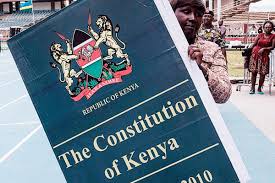
The digital age has rendered Artificial Intelligence (AI) inevitable since it is a vital endeavor in major spheres of our lives. Despite being a solution to many technological problems, its adaptation has posed significant challenges in legal and ethical dimensions.
The writing and publication sector is one of the affected niches. This has raised the need for fact-checking and ensuring that the publications meet a required AI percentage. It’s quite significant to have the right tools to guide your work, which include proving your work is not AI-generated and upholding the genuineness and originality work.
There are a number of ways and tools that one can have in order to ensure that the work they are submitting meets the required percentage and that the work is not plagiarized in any way, be it paid versions or free ones; the results are the main thing one considers.
The most effective tool is Grammarly, which comes in handy when one wants to fact-check, analyse if the work is AI-generated, and check the readability of the work. It also allows one to check the errors in text, spelling mistakes, and the right word to best suit your work. The tool enables you to also check the delivery and tone of your publication. Is it formal, informal, or even friendly in the piece of writing?
Grammarly also enables one to track their work, which is an additional feature that enables one to avoid the submission of AI-generated content.
QuillBot is another important tool in checking for mistakes, rephrasing your work to become more professional, and correcting grammar. The tool is also important in rephrasing one’s work into a more formal and professional copy
There are many tools to check and ensure your work is not AI-generated to avoid your work from being struck out and missing from online publications or editorials. The tools, however, may be limited depending on the plan you are using for free plans. It has a limited word range, a restricted prompt rate during the day, and cannot check for plagiarism at deeper levels. If you have a Pro account, it enables you to check for AI and plagiarism.
To avoid the tussle of getting your work perceived as AI-generated, yet you carry the idea of implementation, ensure you maintain originality, use AI if necessary in the appropriate manner, and also avail yourself of your sources. The tools are easy to use, and one should consider them practical for use in ensuring that you have proof of authoring your work.
AI FAQs (Frequently Asked Questions):
1. What are AI content detection tools?
AI content detection tools are software programs designed to identify whether a piece of writing was generated by artificial intelligence. They help ensure that content is original and not produced by AI models without proper disclosure or editing.
2. Why is it important to detect AI-generated content in publications?
Detecting AI-generated content is crucial for maintaining credibility, upholding editorial standards, and ensuring originality. Many publications and academic platforms now require human-authored work or clearly cited AI assistance.
3. Which tools are best for detecting AI-generated content?
Grammarly and QuillBot are among the best tools. Grammarly checks grammar, readability, and tone, while QuillBot helps with paraphrasing and enhancing formality. Some paid tools also include AI detection and plagiarism features.
4. Do free versions of these tools offer AI detection?
Free versions often have limited features. For more advanced detection of AI usage and plagiarism, upgrading to a Pro or Premium plan is recommended.
5. How can I ensure my content is not flagged as AI-generated?
Maintain originality, cite sources, limit the overuse of AI writing tools, and always fact-check and human-edit your content. Use detection tools to validate your final version before submission.
6. Can Grammarly detect AI-generated content?
While Grammarly doesn’t explicitly flag AI content, it helps improve readability, tone, and structure, which reduces the chances of your content being flagged as AI-generated. Some advanced Grammarly plans integrate with plagiarism and content checking tools.
7. What happens if my content is flagged as AI-generated?
If flagged, your content may be rejected by publishers or editors. To avoid this, always refine and personalize your work and use reliable tools to verify its originality before submission.

